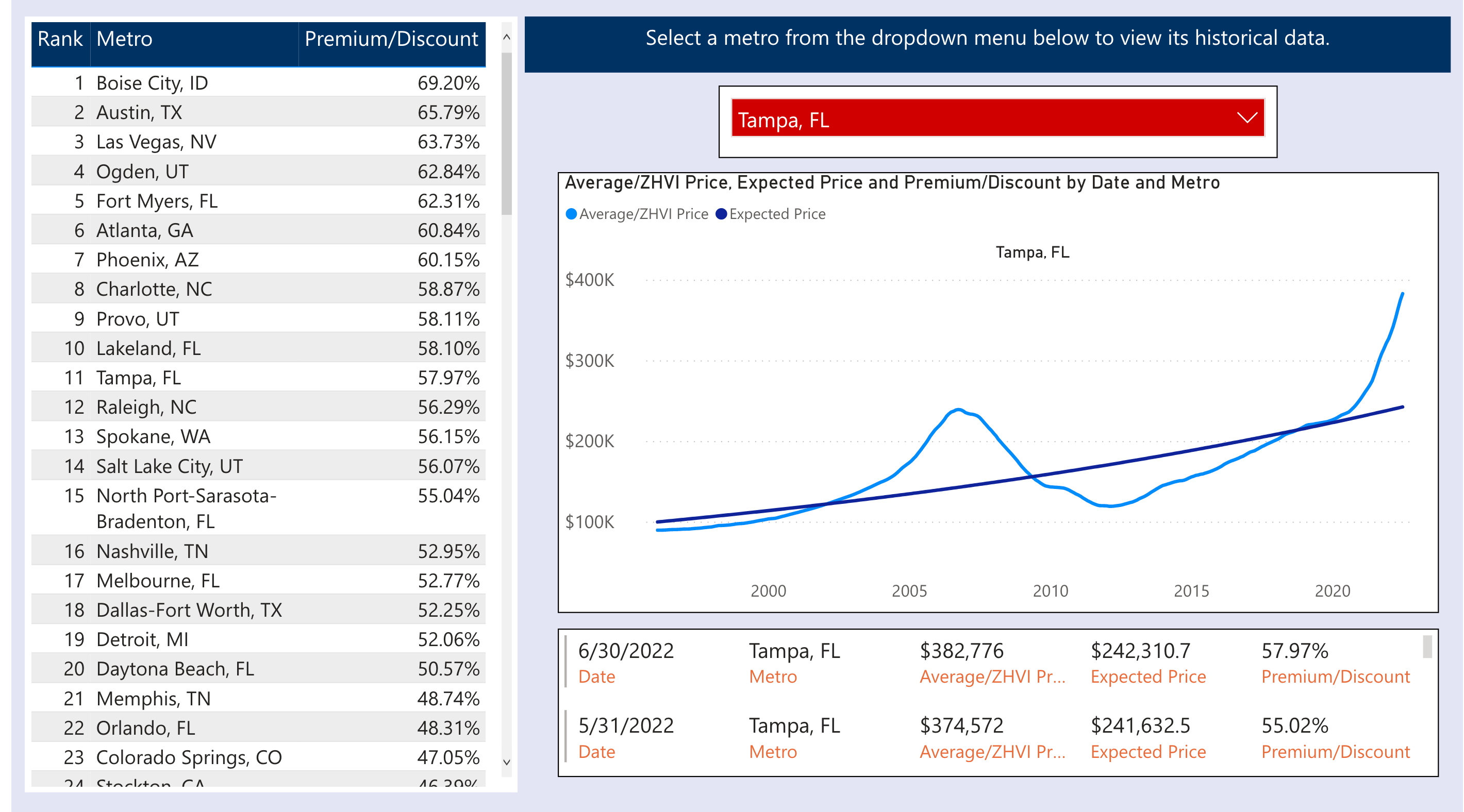The high cost of housing across the country is playing out in once-remote markets and major metropolitan areas. In many places, it’s making homeownership unattainable for many Americans and a risky bet for others. Four U.S. housing markets are overvalued by more than 60 percent, while 11 others are overvalued by more than 50 percent, according to the latest study from researchers at Florida Atlantic University and Florida International University. Homes in Tampa are overvalued as are many other cities in Florida.
Top overvalued cities
Boise, Idaho leads the nation in overpriced housing, with more people discovering the area while working remotely during the pandemic. Boise’s pricing history suggests homes now should cost an average price of $299,202, although the typical buyer is paying $516,548 – 72.64 percent above the area’s long-term pricing trend.
No. 2 Austin, Texas is quickly gaining ground, with buyers paying 67.70 percent more than they should. Buyers in Ogden, Utah (64.73 percent) and Las Vegas (61.48 percent) also are paying significant premiums to live there.
Related: Affordable Homes Coming to East Tampa
No. 8 Fort Myers, Florida, formerly known as a vacation and retirement haven south of Tampa, has fast become synonymous with unaffordable housing. It moved into the Top 10 for the first time. Nearby Lakeland just cracked the Top 10 in the ten spot and Tampa follows just behind at spot number 11. Click here to see the whole list.
“Near-record-low mortgage rates helped fuel demand for housing, especially during the pandemic, and the competition for homes pushed prices higher. But now the Federal Reserve is raising rates to curtail inflation, and already that’s cooling demand,” said Ken H. Johnson, Ph.D., an economist in FAU’s College of Business.
A looming slowdown could help people priced out of the market get into homes. But it also may be a serious concern for some consumers, Johnson added.
“If we’re not at the peak of the current housing cycle, we’re awfully close,” he said. “Recent buyers in many of these cities may have to endure stagnant or falling home values while the market settles – and that’s not what they want to hear if they had planned to resell anytime soon.”
Each month, Johnson and Eli Beracha, Ph.D., of FIU’s Hollo School of Real Estate, rank the most overvalued housing markets of America’s 100 largest metros by determining the premiums buyers are paying. The larger the premium, the more overpriced a market is. The researchers’ data dates back to 1996 and covers single-family homes, townhomes, condominiums and co-ops.
The rankings do not consider how expensive a market traditionally is. The two high-cost housing markets of New York and San Francisco, for example, are among the least overvalued in the country because homes in those two metros still are selling relatively close to where they should be, based on historical trends.
Shoddy underwriting and a glut of homes on the market led to the housing crisis of 2006 to 2011, but those aren’t factors now, according to Beracha.
“In the prior downturn, many homes lost half of their values, but I don’t think we’ll see anything close to that this time around,” he said. “Still, it could be painful for many consumers who are buying near the top of the market.”
Beracha and Johnson said outcomes from this housing crisis will vary across the country, with growing population centers suffering less from price declines but being saddled with prolonged affordability issues. Metros with stagnant or falling populations, however, will most likely take bigger hits to home prices but have far fewer issues with housing affordability.




























